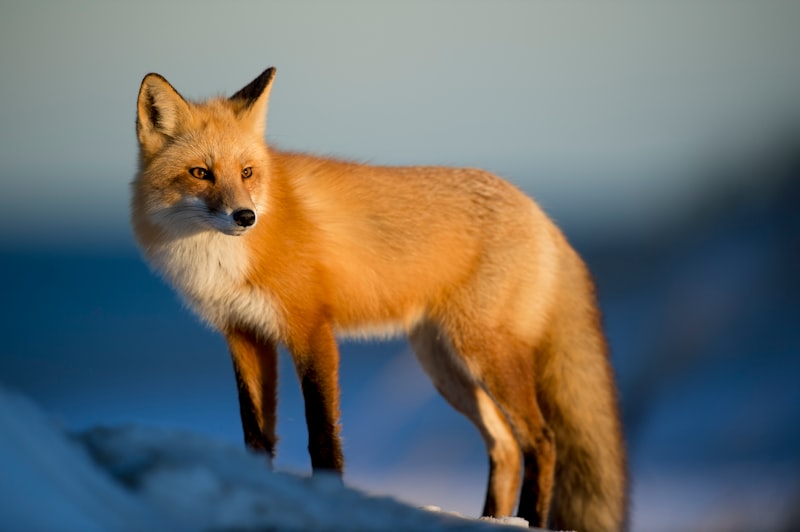At its core, bioinformatics integrates biological data with advanced computational techniques to unravel complex ecological puzzles. Imagine it as a high-tech detective, sifting through vast amounts of genetic information to uncover hidden insights into wildlife populations. Just as a skilled investigator pieces together clues to solve a mystery, bioinformatics analysts decode genetic sequences to reveal the intricate dynamics of biodiversity.
One of its primary applications lies in population genetics. By analyzing DNA samples collected from diverse species, researchers can determine genetic diversity, gene flow patterns, and population structure. This knowledge is crucial for devising effective conservation strategies, such as identifying genetically distinct populations that require targeted protection or understanding how animals adapt to environmental changes over time.
Furthermore, bioinformatics aids in disease surveillance among wildlife populations. Through genomic surveillance, scientists can detect potential disease outbreaks early, track disease transmission pathways, and even predict how pathogens might evolve. This proactive approach not only safeguards vulnerable species but also enhances our ability to mitigate disease risks before they escalate into epidemics.
In the realm of habitat conservation, bioinformatics plays a pivotal role in ecological modeling. By integrating biological data with environmental variables like climate and land use, researchers can simulate the impact of human activities on habitats and predict how these changes may affect wildlife. This predictive power enables conservationists to advocate for sustainable land management practices and prioritize conservation efforts where they are most needed.
Unveiling Nature’s Code: How Bioinformatics Transforms Wildlife Conservation
Bioinformatics isn’t just about crunching numbers—it’s about revealing hidden connections that shape entire ecosystems. By analyzing vast amounts of genetic data, scientists can trace the evolutionary paths of species, uncovering clues about their origins and adaptation strategies. This knowledge is crucial for conservationists striving to safeguard endangered species and fragile habitats from human impact and climate change.
Think of bioinformatics as a high-powered microscope for conservationists. It zooms in on the DNA of wildlife, revealing genetic variations that influence everything from an animal’s physical traits to its susceptibility to diseases. Armed with this knowledge, researchers can develop targeted conservation strategies that are finely tuned to each species’ unique genetic blueprint.
But bioinformatics isn’t just about understanding the present—it’s about predicting the future. By analyzing genetic data over time, scientists can forecast how species might respond to environmental changes. This predictive power is invaluable for preemptive conservation efforts, allowing scientists to take proactive measures before a species is pushed to the brink of extinction.

Consider the African elephant, a majestic giant facing threats from poaching and habitat loss. Through bioinformatics, researchers are mapping its genetic diversity across populations, identifying key areas where conservation efforts can make the most impact. It’s like a GPS guiding us to the heart of conservation challenges, steering us towards solutions that are as dynamic and resilient as the ecosystems they aim to protect.
From Data to Wildlife Protection: Bioinformatics’ Role in Conservation Efforts
At its core, bioinformatics harnesses the power of data to unravel complex ecological mysteries. By collecting and processing vast amounts of genetic information from various species, scientists can map out biodiversity hotspots, track endangered populations, and even predict the impacts of environmental changes on ecosystems.
Think of bioinformatics as a high-tech detective, using DNA sequences and computational models to identify species, understand their genetic diversity, and pinpoint areas where conservation efforts are most needed. It’s like having a microscope that can zoom in on the very building blocks of life itself.
But bioinformatics isn’t just about crunching numbers—it’s about making meaningful connections. By analyzing genetic data, researchers can uncover hidden relationships between species, trace migration patterns, and discover new species previously unknown to science. It’s a bit like uncovering buried treasure in a vast, uncharted wilderness.
Moreover, bioinformatics doesn’t operate in isolation. It collaborates with field biologists, ecologists, and policymakers to translate data into actionable conservation strategies. Together, they can identify critical habitats, design protected areas, and monitor the health of ecosystems over time.
In essence, bioinformatics transforms raw data into valuable insights that drive conservation efforts forward. It’s a tool that empowers scientists to make informed decisions, adapt quickly to environmental challenges, and ultimately safeguard the planet’s rich tapestry of life for future generations.
Genomes and Habitats: Using Bioinformatics to Safeguard Wildlife Diversity
In the realm of conservation biology, the marriage of genomics and bioinformatics has emerged as a powerful tool to protect and preserve wildlife diversity. This synergy allows scientists to delve deep into the genetic makeup of species and their habitats, providing invaluable insights for conservation efforts.
Bioinformatics, the application of computational techniques to biological data, plays a crucial role in this process. By analyzing genomes — the complete set of an organism’s DNA — researchers can uncover genetic variations within species. These variations hold clues about adaptation to different habitats, resilience to diseases, and responses to environmental changes.
Imagine each genome as a vast library of information, containing chapters that narrate the evolutionary history and unique adaptations of a species. Through advanced sequencing technologies and bioinformatics algorithms, scientists can decode these genetic blueprints with unprecedented precision. This knowledge enables conservationists to identify key genetic markers linked to traits essential for survival in specific habitats.
For instance, in a fragmented forest landscape, bioinformatics can reveal whether populations of a species are genetically isolated. This information guides strategies to reconnect habitats and prevent genetic bottlenecks that threaten biodiversity. Similarly, by studying how genes interact with environmental factors, researchers can predict which species might be most vulnerable to climate change or habitat loss.
Moreover, bioinformatics empowers conservation efforts by facilitating the monitoring of endangered species. Genetic data can help estimate population sizes, assess the health of populations, and inform breeding programs aimed at preserving genetic diversity.
In essence, the integration of genomics and bioinformatics provides a scientific backbone for conservation practices. It transforms our ability to understand the intricate relationships between genomes and habitats, offering hope for the sustainable coexistence of wildlife and human activities in a rapidly changing world.
Predictive Power: Harnessing Bioinformatics for Future Wildlife Conservation

Imagine a world where we can foresee the needs of wildlife conservation before they become critical. Thanks to advancements in bioinformatics, this vision is becoming a reality. Bioinformatics, the fusion of biology and data science, offers a powerful toolkit for researchers and conservationists alike to predict and mitigate threats to endangered species.
At its core, bioinformatics leverages vast datasets encompassing genetic information, environmental factors, and species behavior patterns. By analyzing these complex datasets using cutting-edge algorithms, scientists can uncover hidden correlations and trends that traditional methods might miss. This predictive capability allows proactive conservation measures, ensuring that interventions are timely and effective.
One of the key applications of bioinformatics in wildlife conservation is in population monitoring. By studying the genetic diversity within populations, researchers can assess their health and resilience to environmental changes. This genetic data acts as a blueprint, guiding conservation strategies that aim to bolster genetic diversity and mitigate the risks of inbreeding depression.
Moreover, bioinformatics plays a crucial role in understanding species interactions within ecosystems. By analyzing ecological data alongside genetic information, scientists can model how species might respond to changes in their habitat or the introduction of invasive species. This predictive modeling helps in designing habitat corridors and protected areas that maximize biodiversity conservation.
Another groundbreaking use of bioinformatics is in predicting disease outbreaks among wildlife populations. By monitoring genetic markers associated with disease resistance and susceptibility, researchers can preemptively identify populations at risk and implement measures to prevent epidemics before they occur.
In essence, bioinformatics empowers conservationists to look into the future of wildlife populations with unprecedented clarity. By harnessing the predictive power of data and genetics, we can ensure a sustainable future where biodiversity thrives against the odds. As technology continues to advance, so too will our ability to protect and preserve the natural world for generations to come.
DNA Mapping the Wild: Bioinformatics Innovations in Biodiversity Preservation
Imagine unraveling the intricate genetic code of a rare plant species deep in the Amazon rainforest or a critically endangered animal in the African savannah. DNA mapping allows researchers to do just that, providing a comprehensive blueprint that helps understand species evolution, adaptation to environments, and potential vulnerabilities.
In biodiversity hotspots worldwide, where countless species face threats from habitat loss and climate change, DNA mapping plays a crucial role. It helps identify unique genetic markers that distinguish populations within species, essential for effective conservation strategies. By pinpointing genetic diversity hotspots, scientists can prioritize areas for protection and breeding programs, ensuring the survival of diverse gene pools.
Moreover, bioinformatics accelerates the pace of discovery. High-throughput sequencing technologies enable researchers to sequence DNA faster and more cost-effectively than ever before. This rapid data generation fuels global databases that serve as valuable resources for conservationists, policymakers, and educators worldwide.
The applications of DNA mapping extend beyond species conservation. It aids in understanding ecosystem dynamics, such as how species interactions influence biodiversity resilience. For instance, studying the genetic makeup of keystone species reveals their pivotal roles in maintaining ecological balance.
Frequently Asked Questions
How can bioinformatics aid in monitoring endangered species populations?
Bioinformatics aids in monitoring endangered species populations by analyzing genetic data to assess population sizes, genetic diversity, and health status. It allows researchers to track changes over time, identify threats, and plan conservation strategies effectively.
What are the challenges of applying bioinformatics in wildlife conservation?
Learn about the challenges faced when applying bioinformatics in wildlife conservation, including data integration across diverse species, computational resource limitations, and the need for specialized skills in both biology and informatics.
What are some key bioinformatics tools used in wildlife conservation research?
Explore essential bioinformatics tools utilized in wildlife conservation research to analyze genetic diversity, track population dynamics, and assess habitat suitability.
How does bioinformatics help in studying biodiversity and genetics of wildlife?
Bioinformatics aids in studying wildlife biodiversity and genetics by analyzing large-scale genetic data, identifying species and genetic variations, understanding evolutionary relationships, and predicting impacts of environmental changes on populations.
What is the role of bioinformatics in wildlife conservation?
Bioinformatics in wildlife conservation involves using computational tools to analyze genetic data from diverse species. It helps in understanding biodiversity, tracking endangered species, and designing conservation strategies based on genetic diversity.


